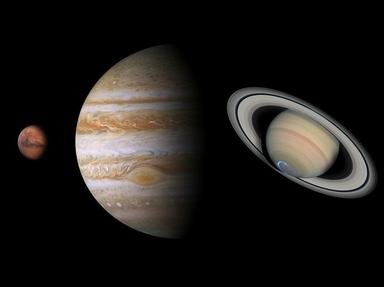Quiz Answer Key and Fun Facts
1. Which planet in our solar system is the slowest spinning planet?
2. What is the gravity of the moon in comparison to Earth?
3. The giant cloud of gas and dust at the centre of the Milky Way contains what chemical that smells similar to rum? The discovery was made by astronomers in 2009.
4. Which gas planet has the largest magnetosphere in our Solar System?
5. Which planet has completed only one full orbit around the Sun (in 2011) since its discovery in the nineteenth century?
6. Which of the gas planets is the coldest in our Solar System?
7. Which moon has a salty ocean that is estimated to be ten times deeper than Earth's deepest ocean?
8. By 2010, there were five dwarf planets recognized by the International Astronomical Union: Pluto, Ceres, Haumea, Makemake and Eris. Which one is the closest to the Sun?
9. Which of the planets has the fastest wind speed in our solar system?
10. Which gas planet has the most methane content in our Solar System?
Source: Author
sw11
This quiz was reviewed by FunTrivia editor
rossian before going online.
Any errors found in FunTrivia content are routinely corrected through our feedback system.

